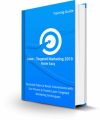Table of Contents
The Benefits of Leasing a Car 4
The Biggest Financial Mistakes People Make When Buying a Car 5
The Downside of Buying a Car 7
The Downside of Leasing a Car 8
Top 5 Mistakes to Avoid When Leasing a Car 10
Car Loan Comparison Tips 11
How to Decide Whether Leasing or Buying a Car is Best for You 13
Pros and Cons of Buying a New vs. a Used Car 14
Should you Buy Your Leased Car? 16
The Benefits of Buying a Car 17
Sample Content Preview
The Biggest Financial Mistakes People Make When Buying a Car
Buying a car is a big investment. But it’s not only the price of the vehicle that needs to be considered. There are also interest rates and monthly payments, spread out over how long the loan is for to take into consideration.
There are several pitfalls that are common to many car buyers. Be careful of these:
• Loan length. Dealerships will give you a startlingly good monthly payment if you extend the loan to 60 or 70 months. This is a bad mistake. Why do they do it? Two reasons: they want to sell you the car. If you can see that the monthly financing is in your budget, you’ll be more likely to go for it. The other reason? They don’t want to sell you that car. They want to sell you a much more expen-sive car, one where monthly payments in a 70-month plan are affordable.
Why not? As soon as a car is sold, it depreciates rapidly. A car is – finan-cially speaking, a bad investment. It is, in fact, a losing investment. The other side to a longer lease is more payments on interest. Eventually, you’ll end up paying twice the original value of the car and will never re-cover what you owe when you sell it.
Solution? Don’t get a car you can’t pay off in three years. It might not be as slick as the nicer ones, but your finances will love you.
• Leasing. Keep in mind that cars are financially a bad idea. They depreciate. Fast. On the other hand, if you pay off a car in three years and drive it for five after that, you can take that money you’ve been using for car payments and put to other use. At the end of three years on a lease, all you have is someone else’s car who wants it back. Now you have to start on a new lease.
Why not? No one needs a new car every three years, and if you are run-ning a car so hard that you do, then the leasing company is going to fine you heavily for excess wear and tear. When you’re done, you’ll have no car, no trade-in and no way to get another car except through another lease.
Solution? No one ever improved their credit by leasing. But a purchase with prompt payments will go a long way to revitalizing your credit and give you a credible option for other uses of your money.
Don’t let these mistakes affect your happiness with purchasing your car. With a little proper care and research, you’ll be able to avoid them, and still, have good financial footing alongside a beautiful and dependable vehicle.
The Downside of Buying a Car
Owning a shiny new car is a dream most of us have had at one point. Chances are, our fantasies date back to our childhood when we saw that bright red sports car reflecting the sunlight as it flew by. From that moment, on we’ve all given a thought to owning a car. It’s been a part of the “American Dream” for genera-tions.
But there are some problems with achieving that dream that needs to be consid-ered in the cold light of day. Here are a few things to think about when consider-ing whether to buy a car.
• Price. When you purchase a car, you are buying that car from now until you sell it or haul it away. As opposed to leasing when you’re paying for a portion of the car’s life, purchasing takes the entire life of the car, meaning you’re pay-ing for the full sticker price. You’re paying more when buying because you’re getting more car.
• Down Payment. As with any loan, you may need to provide a down payment. This requires having the money or trade in to qualify for the loan.
• Payments. Paying a car loan will almost always be a higher monthly payment than leasing. Be very cautious of long-term loans, with higher interest. You may end up paying far more than the car is actually worth.
• Depreciation. You’ve probably heard that a car depreciates significantly once it has been purchased. The question, however, is, how fast? Purchasing a car will lead to a variable depreciation rate, without warning. The only thing you can be sure of is that it will depreciate. It’s true that leased cars will depreciate at the same variable rate, but the depreciation on a leased car is someone else’s problem.
• Major repairs. Purchasing a new car will provide you with a warranty. There are some things a warranty won’t cover or will only cover for a year or two. Ex-tended warranties will help fill in that gap, but in the end, the costs are your responsibility exclusively.
Owning a car has its advantages, but there are also cons, just like with everything in life. These need to be researched and investigated before committing to a pay-ment that may last years. A car is a complex interaction of mechanical, electrical, and chemical systems and requires a great deal of responsibility and proper care. Owning a car drops all of that squarely on your shoulders, making this a decision that should not be made lightly.
The Downside of Leasing a Car
Buying a car isn’t the only way to get behind the driver’s seat. There are times when leasing a car might make more sense, economically. Especially when you’re keeping up with the latest tech. Leasing, however, does have its drawbacks.
Remember, when you lease a car, you are paying for the privilege of using some-one else’s car. This means that the dealership you’re renting from is able to set certain rules about how that vehicle is going to be used.
Always read the lease carefully. There might be:
• Mileage Restrictions. The car you lease has a certain life cycle. It’s expected to last a certain number of years and a certain number of miles. You’re paying for a limited amount of both. Most leases will allow a certain number of miles per year, and to go over that will result in very high penalties and fines.
• Excessive wear. It’s not only the number of miles driven, but it’s also how they’re driven. Taking a sedan fast over a rutted dirt road, for example, will wear out the shocks and struts and tires faster than driving paved roads through a city. Climbing mountains will add more wear faster as opposed to staying on flatland.
Excessive wear shortens the lifespan of the car, and you will pay for the part you used, no matter how quickly.
• How you use it. It might not be an issue, but most leases specifically forbid the use of their car for use in Lyft or Uber ventures.
• Maintenance. Every car needs periodic maintenance. Whereas some might feel comfortable changing their own oil, many leases spell out that mainte-nance has to be done by approved technicians. If leasing from a dealership, they will often specify that work is done at a dealership. This is paid for from your pocket and is not part of the monthly lease payments.
Other Details- 10 Articles (PDF)
- 1 Ebook (PDF), 19 Pages
- 10 Audios (MP3)
- Posters
- Year Released/Circulated: 2018
- File Size: 124,748 KB
License Details:
[YES] Can use
[NO] RESELL OR GIVEAWAY














